Analysis of Damage to Shipping Container Sides During Port Handling Operations
Abstract
1. Introduction
2. Analysis of Damage Causes and On-Shore Impact Scenarios
2.1. Background Statistics
2.2. Use Cases with Stacking Operations On-Shore
3. Results
3.1. Side Impact Measurements
- Between the 69th and 70th (see Figure 7a)—Peak acceleration: X = 4.1 g, Y = 3.8 g, Z = 3.9 g.
- Between the 155th and 156th (see Figure 7b)—Peak acceleration: X = 7.2 g, Y = 3.2 g, Z = 4.2 g.
- Between the 21st and 22nd (see Figure 7c)—Peak acceleration: X = 2.3 g, Y = 5.1 g, Z = 2.7 g.
- Between the 78th and 80th (see Figure 7d)—Peak acceleration: X = 3.2 g, Y = 3.8 g, Z = 2.3 g.
3.2. Rear Impact Measurements
- Between the 91st and 92nd (mild impact, see Figure 8a)—X = 0.4 g, Y = 1.2 g, Z = 1.2 g.
- Between the 102nd and 103rd (aggressive impact, see Figure 8b)—X = 3.4 g, Y = 6.2 g, Z = 3.7 g.
- Between the 90th and 91st (mild impact, see Figure 8c)—X = 1.0 g, Y = 1.4 g, Z = 2.4 g.
- Between the 144th and 145th (aggressive impact, see Figure 8d)—X = 1.1 g, Y = 1.6 g, Z = 3.2 g.
- Between the 208th and 209th (mild impact, see Figure 8e)—X = 0.8 g, Y = 1.1 g, Z = 3.4 g.
3.3. Qualitative Analysis of Impact-Induced Acceleration Signals
3.4. Interpretation
4. Discussion
5. Conclusions
Author Contributions
Funding
Data Availability Statement
Acknowledgments
Conflicts of Interest
Abbreviations
| TEU | Twenty-foot equivalent units |
| AGVJ | Automated guided vehicle |
| TOS | Terminal operating system |
| ERP | Enterprise resource planning |
| ASC | Automated stacking crane |
References
- Nguyen, P.N.; Kim, H.; Son, Y.M. Challenges and Opportunities for Southeast Asia’s Container Ports throughout the COVID-19 Pandemic. Res. Transp. Bus. Manag. 2024, 52, 101074. [Google Scholar] [CrossRef]
- Zhou, C.; Zhu, S.; Bell, M.G.H.; Lee, L.H.; Chew, E.P. Emerging Technology and Management Research in the Container Terminals: Trends and the COVID-19 Pandemic Impacts. Ocean Coast. Manag. 2022, 230, 106318. [Google Scholar] [CrossRef]
- Brooks, L.; Gendron-Carrier, N.; Rua, G. The Local Impact of Containerization. J. Urban. Econ. 2021, 126, 103388. [Google Scholar] [CrossRef]
- del Rosal, I.; Moura, T.G.Z. The Effect of Shipping Connectivity on Seaborne Containerised Export Flows. Transp. Policy 2022, 118, 143–151. [Google Scholar] [CrossRef]
- Cha, S.-H.; Noh, C.-K. A Case Study of Automation Management System of Damaged Container in the Port Gate. J. Navig. Port Res. 2017, 41, 119–126. [Google Scholar] [CrossRef]
- Jakovlev, S.; Eglynas, T.; Voznak, M.; Jusis, M.; Partila, P.; Tovarek, J.; Jankunas, V. Detection of Physical Impacts of Shipping Containers during Handling Operations Using the Impact Detection Methodology. J. Mar. Sci. Eng. 2022, 10, 1250. [Google Scholar] [CrossRef]
- Styliadis, T.; Chlomoudis, C. Analysing the Evolution of Concentration within Containerized Transport Chains through a Circuitist Approach: The Role of Innovations in Accelerating the Circuits of Liner and Container Terminal Operators. Asian J. Shipp. Logist. 2021, 37, 321–328. [Google Scholar] [CrossRef]
- Liang, C.; Fan, L.; Xu, D.; Ding, Y.; Gen, M. Research on Coupling Scheduling of Quay Crane Dispatch and Configuration in the Container Terminal. Comput. Ind. Eng. 2018, 125, 649–657. [Google Scholar] [CrossRef]
- Jakovlev, S.; Eglynas, T.; Voznak, M.; Jusis, M.; Partila, P.; Tovarek, J.; Jankunas, V. Detecting Shipping Container Impacts with Vertical Cell Guides inside Container Ships during Handling Operations. Sensors 2022, 22, 2752. [Google Scholar] [CrossRef]
- Imai, A.; Nishimura, E.; Papadimitriou, S. Marine Container Terminal Configurations for Efficient Handling of Mega-Containerships. Transp. Res. E Logist. Transp. Rev. 2013, 49, 141–158. [Google Scholar] [CrossRef]
- Hoffmann, N.; Stahlbock, R.; Voß, S. A Decision Model on the Repair and Maintenance of Shipping Containers. J. Shipp. Trade 2020, 5, 22. [Google Scholar] [CrossRef]
- Carn, J. Smart Container Management: Creating Value from Real-Time Container Security Device Data. In Proceedings of the 2011 IEEE International Conference on Technologies for Homeland Security, HST 2011, Waltham, MA, USA, 15–17 November 2011; pp. 457–465. [Google Scholar] [CrossRef]
- Mahmood, S.; Hasan, R.; Ullah, A.; Sarker, K.U. SMART Security Alert System for Monitoring and Controlling Container Transportation. In Proceedings of the 2019 4th MEC International Conference on Big Data and Smart City, ICBDSC 2019, Muscat, Oman, 15–16 January 2019. [Google Scholar] [CrossRef]
- Nexxiot. Smart Containers: Safe, Secure and Compliant Supply Chains; Nexxiot: Frisco, TX, USA, 2023. [Google Scholar]
- Tovarek, J.; Partila, P.; Jakovlev, S.; Voznak, M.; Eglynas, T.; Jusis, M. A New Approach for Early Detection of Biological Self-Ignition in Shipping Container Based on IoT Technology for the Smart Logistics Domain. In Proceedings of the 29th Telecommunications Forum (TELFOR 2021), Belgrade, Serbia, 23–24 November 2021. [Google Scholar]
- Beaumont, P. Cybersecurity Risks and Automated Maritime Container Terminals in the Age of 4IR. In Handbook of Research on Information and Cyber Security in the Fourth Industrial Revolution; IGI Global: Hershey, PA, USA, 2018; pp. 497–516. [Google Scholar]
- Gunes, B.; Kayisoglu, G.; Bolat, P. Cyber Security Risk Assessment for Seaports: A Case Study of a Container Port. Comput. Secur. 2021, 103, 102196. [Google Scholar] [CrossRef]
- Yang, Y.; Sun, J.; Tang, L. Research on the Model of Risk Identification of Container Logistics Outsourcing Based Factor Analysis. In Proceedings of the 2008 IEEE International Conference on Service Operations and Logistics, and Informatics, Beijing, China, 12–15 October 2008; pp. 1680–1685. [Google Scholar] [CrossRef]
- Budiyanto, M.A.; Fernanda, H. Risk Assessment of Work Accident in Container Terminals Using the Fault Tree Analysis Method. J. Mar. Sci. Eng. 2020, 8, 466. [Google Scholar] [CrossRef]
- Wan, S.; Yang, X.; Chen, X.; Qu, Z.; An, C.; Zhang, B.; Lee, K.; Bi, H. Emerging Marine Pollution from Container Ship Accidents: Risk Characteristics, Response Strategies, and Regulation Advancements. J. Clean. Prod. 2022, 376, 134266. [Google Scholar] [CrossRef]
- Zhou, G.; Li, D.; Bian, J.; Zhang, Y. Airfreight Forwarder’s Shipment Planning: Shipment Consolidation and Containerisation. Comput. Oper. Res. 2024, 161, 106443. [Google Scholar] [CrossRef]
- Maritime, N.K. RFID-Based RTLS for Improvement of Operation System in Container Terminals. In Proceedings of the 2006 Asia-Pacific Conference on Communications, Busan, Republic of Korea, 31 August–1 September 2006; pp. 1–5. [Google Scholar]
- Chang, C.H.; Xu, J.; Song, D.P. An Analysis of Safety and Security Risks in Container Shipping Operations: A Case Study of Taiwan. Saf. Sci. 2014, 63, 168–178. [Google Scholar] [CrossRef]
- Jakovlev, S.; Voznak, M. Auto-Encoder-Enabled Anomaly Detection in Acceleration Data: Use Case Study in Container Handling Operations. Machines 2022, 10, 734. [Google Scholar] [CrossRef]
- Yuan, S.; Skinner, B.T.; Huang, S.; Liu, D.K.; Dissanayake, G.; Lau, H.; Pagac, D.; Pratley, T. Mathematical Modelling of Container Transfers for a Fleet of Autonomous Straddle Carriers. In Proceedings of the 2010 IEEE International Conference on Robotics and Automation, Anchorage, AK, USA, 3–7 May 2010; pp. 1261–1266. [Google Scholar] [CrossRef]
- Gelareh, S.; Merzouki, R.; McGinley, K.; Murray, R. Scheduling of Intelligent and Autonomous Vehicles under Pairing/Unpairing Collaboration Strategy in Container Terminals. Transp. Res. Part C Emerg. Technol. 2013, 33, 1–21. [Google Scholar] [CrossRef]
- Bahnes, N.; Kechar, B.; Haffaf, H. Cooperation between Intelligent Autonomous Vehicles to Enhance Container Terminal Operations. J. Innov. Digit. Ecosyst. 2016, 3, 22–29. [Google Scholar] [CrossRef]
- Liu, C.I.; Jula, H.; Vukadinovic, K.; Ioannou, P. Automated Guided Vehicle System for Two Container Yard Layouts. Transp. Res. Part C Emerg. Technol. 2004, 12, 349–368. [Google Scholar] [CrossRef]
- Jung, S.-H.; Lim, D.-S.; Nam, K.-C. An Economic Analysis of Transportation Equipments at Container Terminals. J. Navig. Port Res. 2011, 35, 167–172. [Google Scholar] [CrossRef]
- Sharif, O.; Huynh, N. Storage Space Allocation at Marine Container Terminals Using Ant-Based Control. Expert. Syst. Appl. 2013, 40, 2323–2330. [Google Scholar] [CrossRef]
- UNECE. White Paper Smart Containers Real-Time Smart Container Data for Supply Chain Excellence. Simple, Transparent and Effective Processes for Global Commerce; United Nations: Geneva, Switzerland, 2020. [Google Scholar]
- Ting, S.L.; Wang, L.X.; Ip, W.H. A Study of RFID Adoption for Vehicle Tracking in a Container Terminal. J. Ind. Eng. Manag. 2012, 5, 22–52. [Google Scholar] [CrossRef][Green Version]
- American Bureau of Shipping. Certification of Container Securing Systems; American Bureau of Shipping: Spring, TX, USA, 2021. [Google Scholar]
- Caballini, C.; Gracia, M.D.; Mar-Ortiz, J.; Sacone, S. A Combined Data Mining—Optimisation Approach to Manage Trucks Operations in Container Terminals with the Use of a TAS: Application to an Italian and a Mexican Port. Transp. Res. E Logist. Transp. Rev. 2020, 142, 102054. [Google Scholar] [CrossRef]
- Choi, S.G.; Kim, S.K.; Kim, C.H. A Study on the Cost Allocation of the Container Terminal Operator Coalition through a Game-Theoretic Approach: Focusing on Busan New Port. J. Korean Navig. Port Res. 2020, 44, 211–218. [Google Scholar]
- Yi, M.S.; Lee, B.K.; Park, J.S. Data-Driven Analysis of Causes and Risk Assessment of Marine Container Losses: Development of a Predictive Model Using Machine Learning and Statistical Approaches. J. Mar. Sci. Eng. 2025, 13, 420. [Google Scholar] [CrossRef]

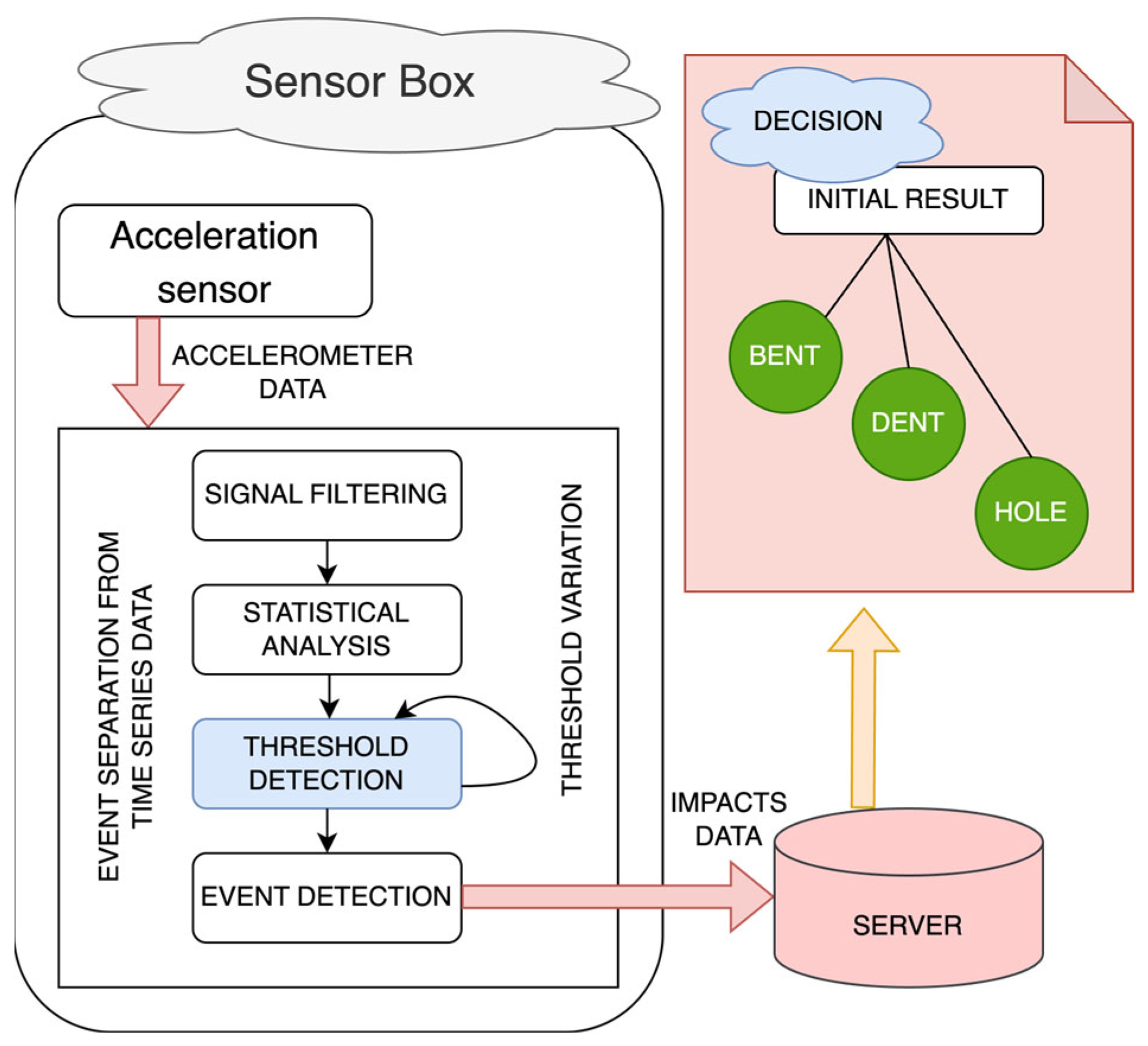
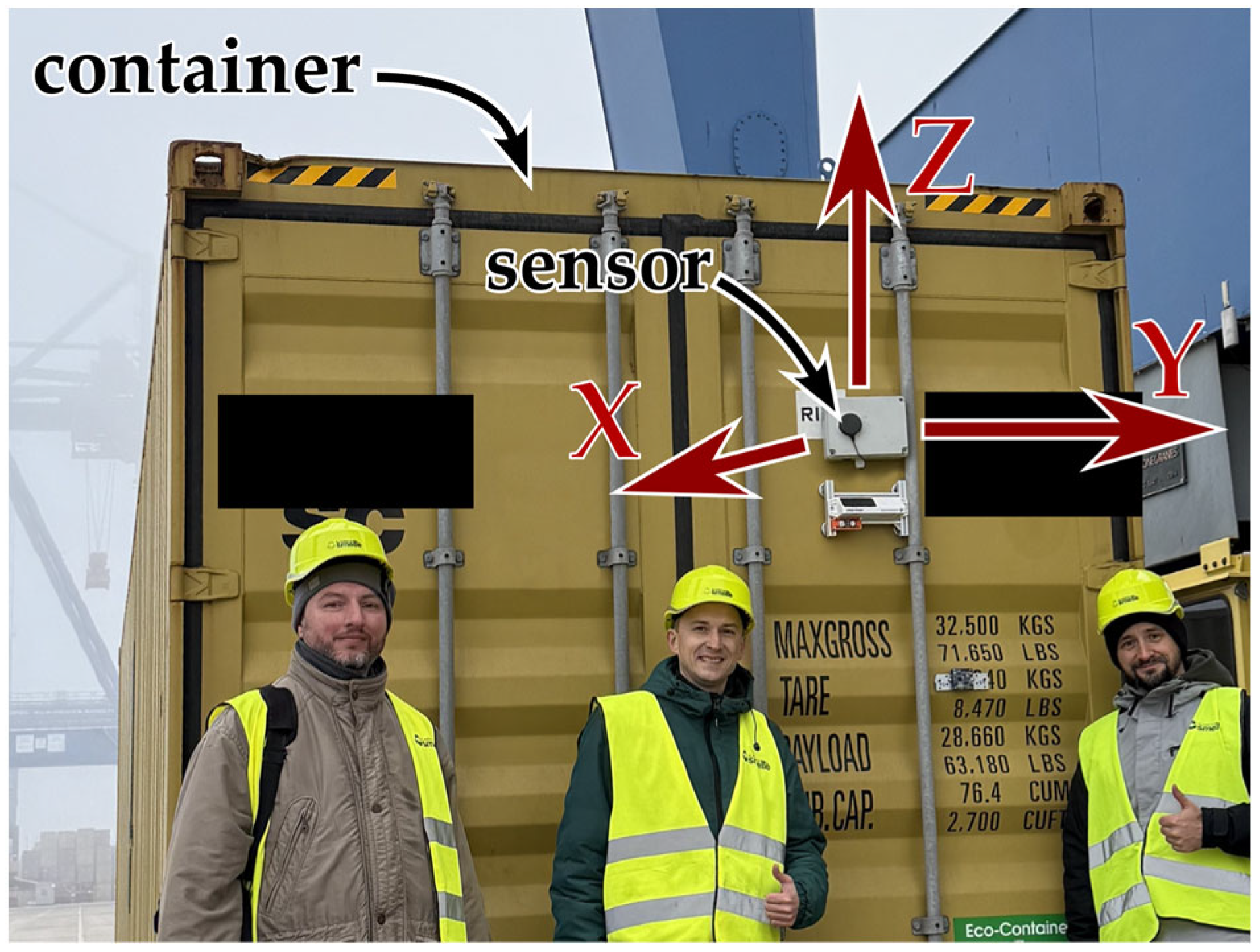

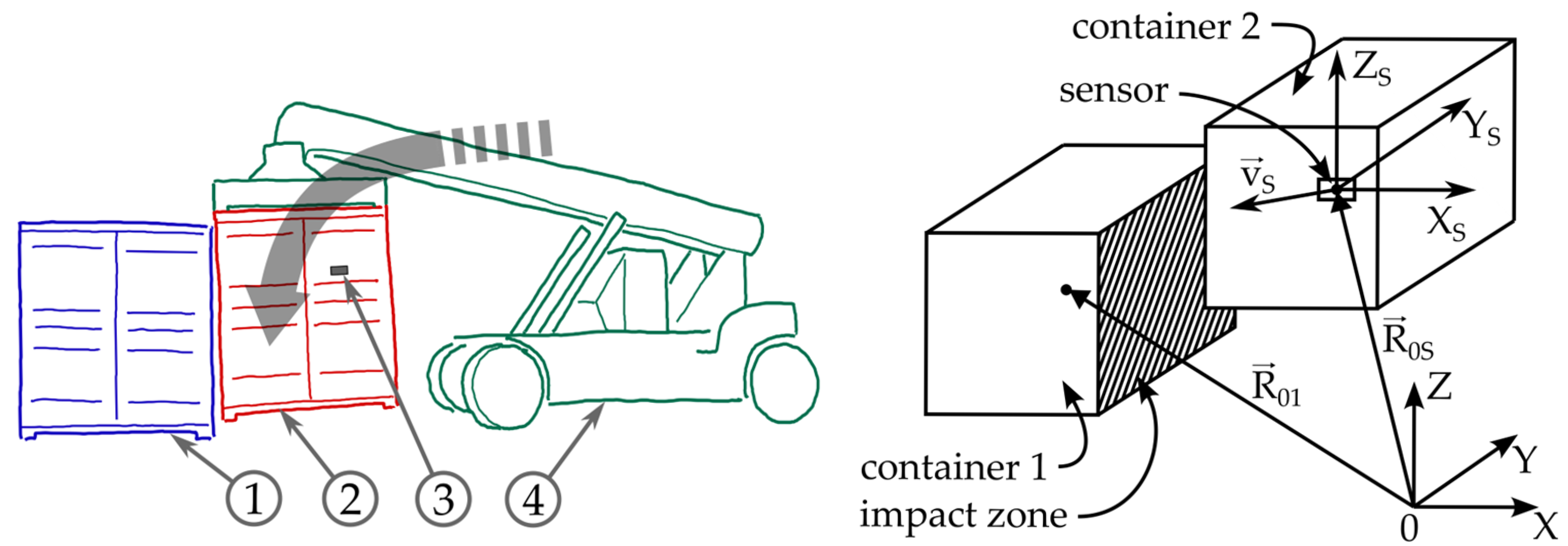
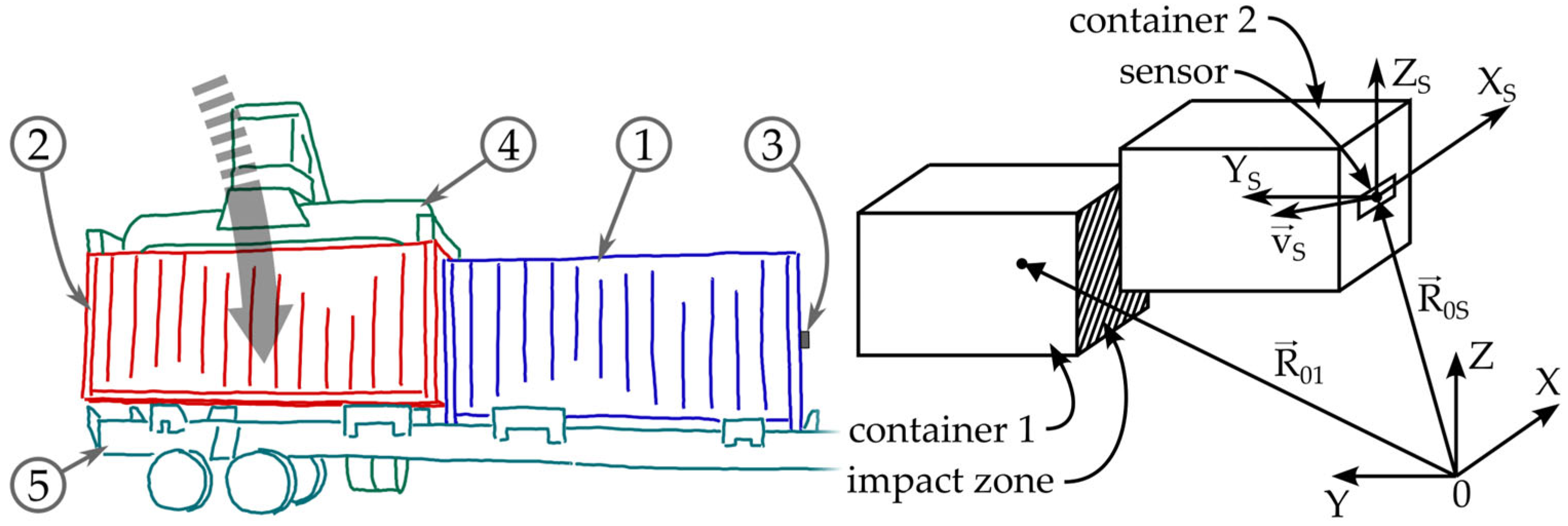


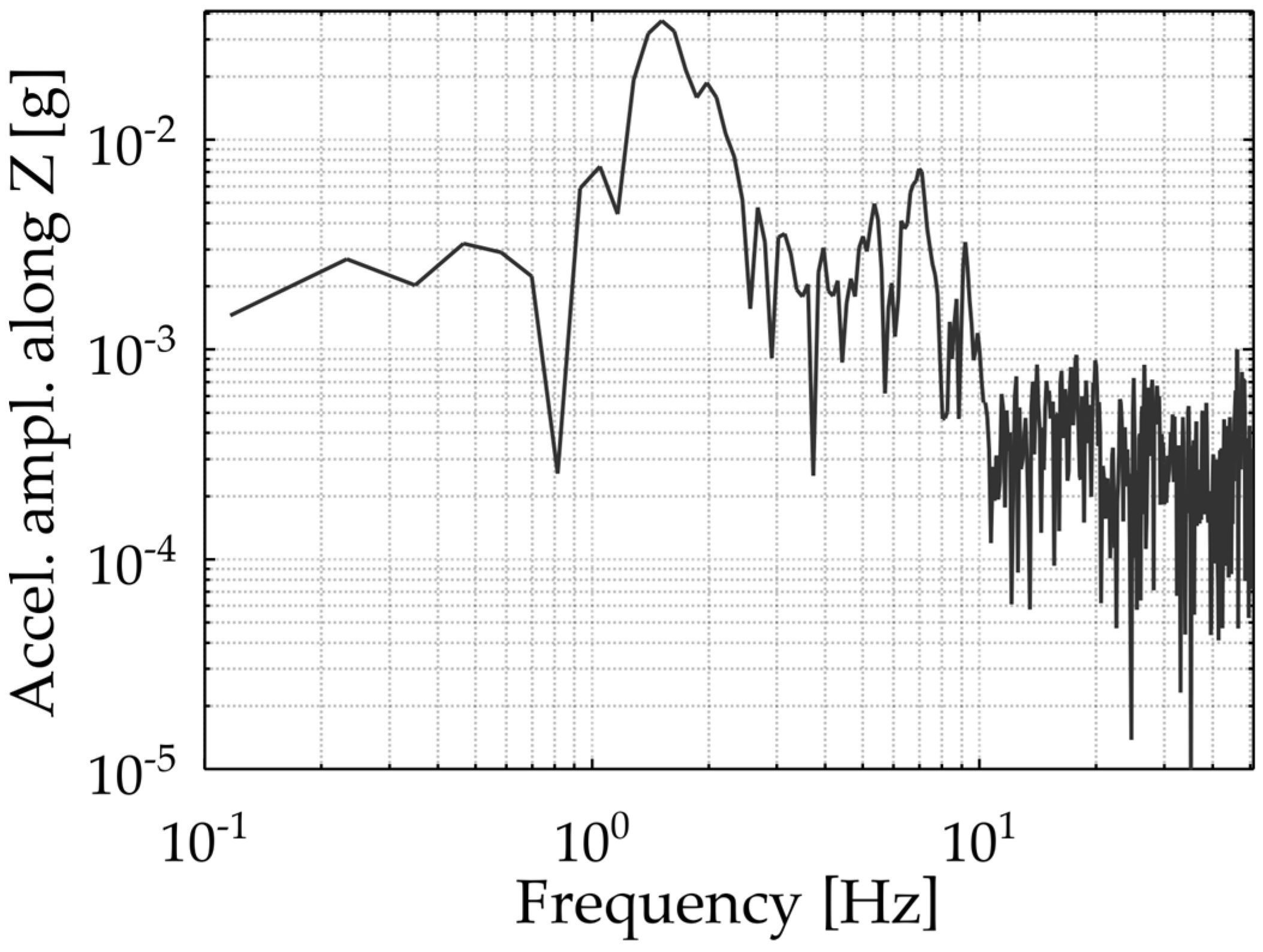
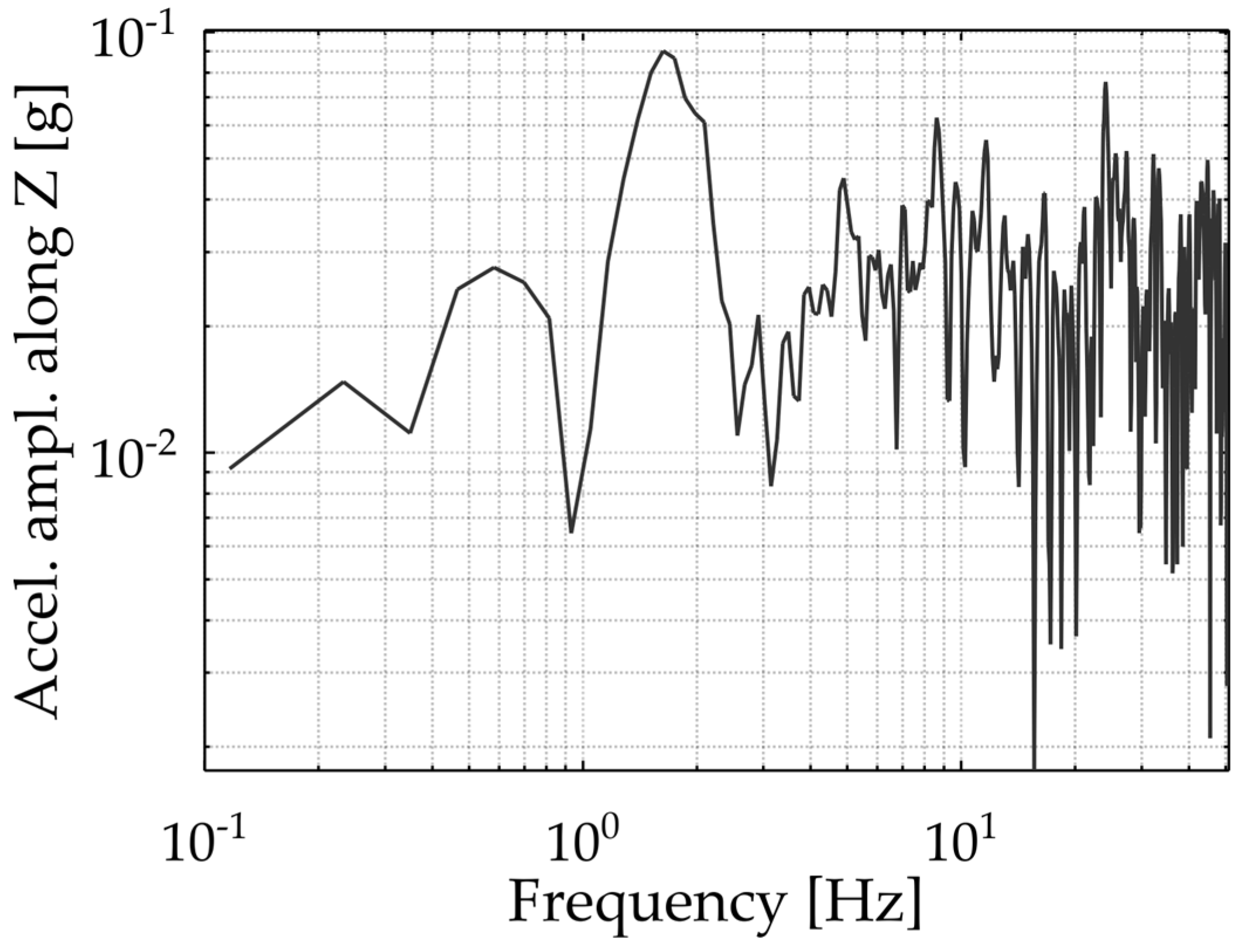
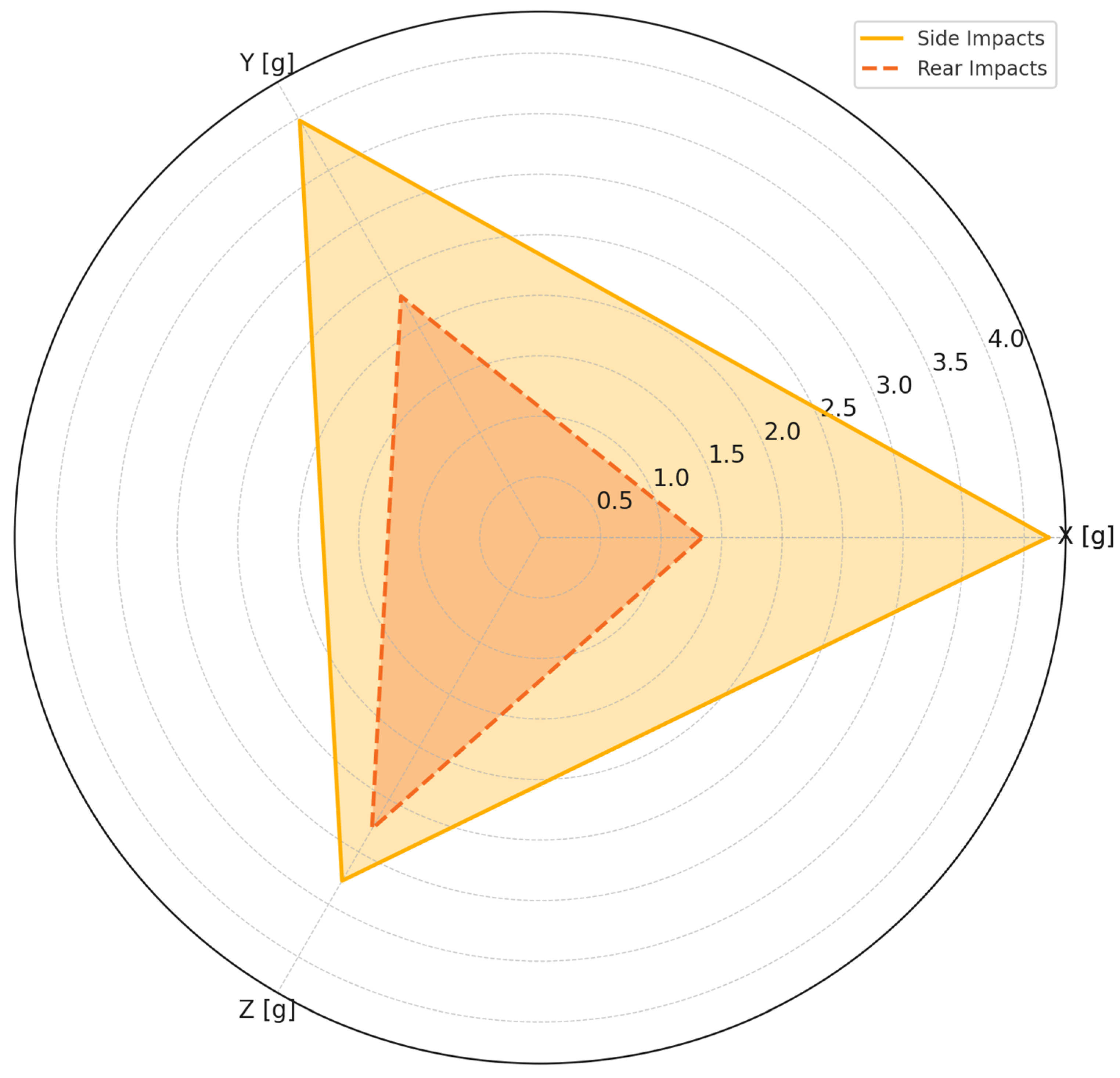
| Cause of Damage | Statistic | Source |
|---|---|---|
| Improper packing and securing | 65% of cargo damage claims are due to poor packing and securing | Officially provided by the Global Trade Magazine “https://globaltrademag.com/” |
| Physical damage during handling | 25% of cargo damages are attributed to physical handling damage | Officially provided by IFA Forwarding “https://ifa-forwarding.net/” |
| Containers lost overboard | 11% of cargo damage claims are due to containers lost at sea | Officially provided by Container xChange “https://www.container-xchange.com/” |
| Temperature-related damages | 14% of cargo damages are due to incorrect temperatures | Officially provided by IFA Forwarding “https://ifa-forwarding.net/” |
| Theft-related damages | 9% of cargo damages are due to theft | Officially provided by IFA Forwarding “https://ifa-forwarding.net/” |
| Shortage-related damages | 8% of cargo damages are due to shortages | Officially provided by IFA Forwarding “https://ifa-forwarding.net/” |
| Maritime incidents in ports and terminals | 2400 incidents recorded in 2022; ~50% occurred within port boundaries | Officially provided by Port Technology “https://www.porttechnology.org/” |
| Incidents at berth or harbour | 813 incidents occurred while docked in ports and harbours in 2022 | Officially provided by Port Technology “https://www.porttechnology.org/” |
| APM Terminal incidents | Over 1200 incidents reported globally in 2019 | Officially provided by BoxOnWheel “https://boxonwheel.com/” |
| Unreported container damages | Minor damages can reduce container value by 2–5%; many incidents go unreported | Officially provided by Identec Solutions “https://www.identecsolutions.com/” |
| Average annual containers lost at sea | Approximately 1382 containers were lost annually between 2008 and 2019 | Officially provided by Standard Club “https://www.standard-club.com/” |
| Adverse weather as a cause of container loss | 57.14% of container loss incidents are attributed to adverse weather conditions | Yi et al. [36] |
Disclaimer/Publisher’s Note: The statements, opinions and data contained in all publications are solely those of the individual author(s) and contributor(s) and not of MDPI and/or the editor(s). MDPI and/or the editor(s) disclaim responsibility for any injury to people or property resulting from any ideas, methods, instructions or products referred to in the content. |
© 2025 by the authors. Licensee MDPI, Basel, Switzerland. This article is an open access article distributed under the terms and conditions of the Creative Commons Attribution (CC BY) license (https://creativecommons.org/licenses/by/4.0/).
Share and Cite
Jakovlev, S.; Eglynas, T.; Jankunas, V.; Jusis, M.; Voznak, M. Analysis of Damage to Shipping Container Sides During Port Handling Operations. J. Mar. Sci. Eng. 2025, 13, 982. https://doi.org/10.3390/jmse13050982
Jakovlev S, Eglynas T, Jankunas V, Jusis M, Voznak M. Analysis of Damage to Shipping Container Sides During Port Handling Operations. Journal of Marine Science and Engineering. 2025; 13(5):982. https://doi.org/10.3390/jmse13050982
Chicago/Turabian StyleJakovlev, Sergej, Tomas Eglynas, Valdas Jankunas, Mindaugas Jusis, and Miroslav Voznak. 2025. "Analysis of Damage to Shipping Container Sides During Port Handling Operations" Journal of Marine Science and Engineering 13, no. 5: 982. https://doi.org/10.3390/jmse13050982
APA StyleJakovlev, S., Eglynas, T., Jankunas, V., Jusis, M., & Voznak, M. (2025). Analysis of Damage to Shipping Container Sides During Port Handling Operations. Journal of Marine Science and Engineering, 13(5), 982. https://doi.org/10.3390/jmse13050982











